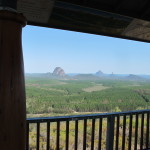
We did not notice him for several minutes, sitting quietly at one edge of the large open-sided octagonal hut. He was hunched over a book, slowly reading through what we soon learned was a Bible. At times he stopped to stare eastward through the blue haze toward the risen mid-morning sun.
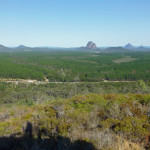
A bit breathless, we had just made the steep half-hour climb up Wild Horse Mountain to look westward as the sun lit up the verdant farmland and the odd scatter of a dozen volcanic mounds known as the Glass House Mountains. This unusual, tranquil landscape is about an hour north of Brisbane, just past the numerous theme parks that attract most people to the hinterland away from the beaches of the Sunshine Coast.
As often the case with natural features in Australia and also New Zealand, explorer James Cook named the mountains, in May of 1770. Though he might have seen them glistening in the sun, as we did this morning, he surely squinted at them in a peculiar way when he noted “they are remarkable for the singular form of their elevation, which very much resembles a glass house, and for this reason I called them the Glass Houses…” We didn’t quite see the analogy however much we squinted.
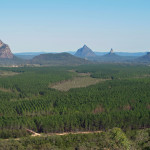
Before Cook, the indigenous people, the Gubbi Gubbi and Jinibara tribes, presumably unfamiliar with glass, pictured the mountains in another way, one closely tied to a tribal ethics lesson. Each of the mountains was a family member – the most prominent three being the looming father Tibrogargan, the rounded mother Beerwah and the very erectile eldest son Coonowrin. The legend relates that the son cowardly neglected his duty to save his mother from the flooding sea. And so he hangs his head in shame, the father stares away toward the sea, while all weep for shame producing the many local streams, waterfalls and pools. The area was spiritually powerful for the local tribes, a place to gather for ceremonies, training and business.
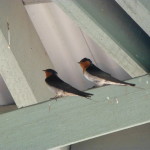
The young man at Wild Horse Lookout was discovering the spirituality of the Glass House Mountains in his own way. He had climbed here the night before from his home nearby, with only a sleeping bag to keep out the chill, a large flask of water and his Bible. His only companions, except for those like us who huffed and puffed up to the lookout for a short while, were the dozen welcome swallows careening within the eaves of the hut’s sturdy peak. He would continue to fast, read and contemplate for several days – staring at times around the full circle of the landscape below.
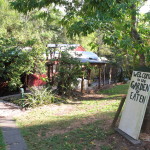
His spiritual efforts amid the natural beauty of these peaks reminded us how thousands head toward the red sandstone mountains of Sedona in order to draw strength from a place where they feel divine and earthly forces intertwine. We didn’t hear much talk about that kind of thing here, but a number of meditation centers in the nearby hills do offer contemplative opportunities. And the Glass House Ecolodge where we stayed, with the botanical wonderland of its “Garden of Eaten” and a simple mellow vibe, seemed just perfect for those who look for inspiration.
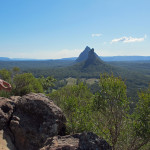
Many do seem to find that here. The day before we had climbed for an hour to a narrow rocky ridge atop Mt. Ngungun, a natural lookout point among the mountains. At the peak, we shared the view with two young women of Filipino origin, an Aussie from Brisbane and her friend from San Diego. As often happens, we talked with them about travel around the country and the world, as well as the grand vista before us. As they left, one of them commented how the landscape showed the blessing of nature that God had given us to appreciate. She handed us a brochure about the Bible, but didn’t try to proselytize. She just wanted to share her thrill at what we had viewed together, and its spiritual context for her.
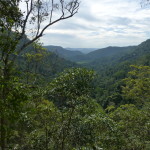
Up in the hills with the meditation centers, just north of Glass House along the Blackall Range, we found more natural beauty, along with man-made delights. We roamed along the long ridge line of Route 23, passing through the quaint villages of Mapleton, Montville and Maleny – towns filled with tea rooms, cafes and olde English styling. We stopped frequently for sky-high views over the lapping hills below. We also found rich rainforests, such as at Kondalilla and Mary Cairncross, two of the many reserves here. At these, we walked meditatively through huge eucalpyts and figs, sassafras and walnut trees, as they echoed with the lash-snap call of whipbirds and crybaby chant of catbirds. We understood why the local council calls this area “The Hinterland of the Soul.”
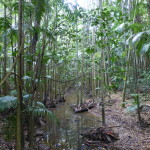
We regretted leaving all this – the Glass House Mountains and the forested hills – for a couple of days look at Brisbane. For all its urban charms, we found Brisbane a tough town to embrace, let alone get around. It has all the requisites for a pleasant stay: a meandering river, ferries to move you up down and across, a rectilinear CBD, a long pedestrian mall filled with expensive stuff to buy and a huge arts district in Southbank.
But myriad highways along the water make it tough to get around on foot or by car; feeder streets are wide and challenging to negotiate; street-gobbling developments get in the way; the arts buildings are stand-alone fortresses virtually spurning the river and street life, devoid of cafes or bars other than in-house ones; the happening neighborhoods a bit tucked away.
Long-time residents seem to concede all this, but eventually find ways to make it work for them, so Brisbane perhaps grows on you after a while. We found ourselves, however, wishing we were back in the rainforests and towns of the Hinterland and the sublime feeling of the Glass House Mountains.
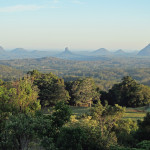
Perhaps it was the people who shared their inspiration with us, or perhaps it was that final glorious vista we enjoyed. As evening approached and the thick woodland of the Mary Cairncross reserve was darkening, we emerged from the rainforest. Surprised, we found ourselves on the ridge’s edge, looking south at the Glass House mountains jutting from the plains, awed by the landscape now glowing in the golden evening light.
(Also, for more pictures from Australia, CLICK HERE to view the slideshow at the end of the Australia itinerary page.)


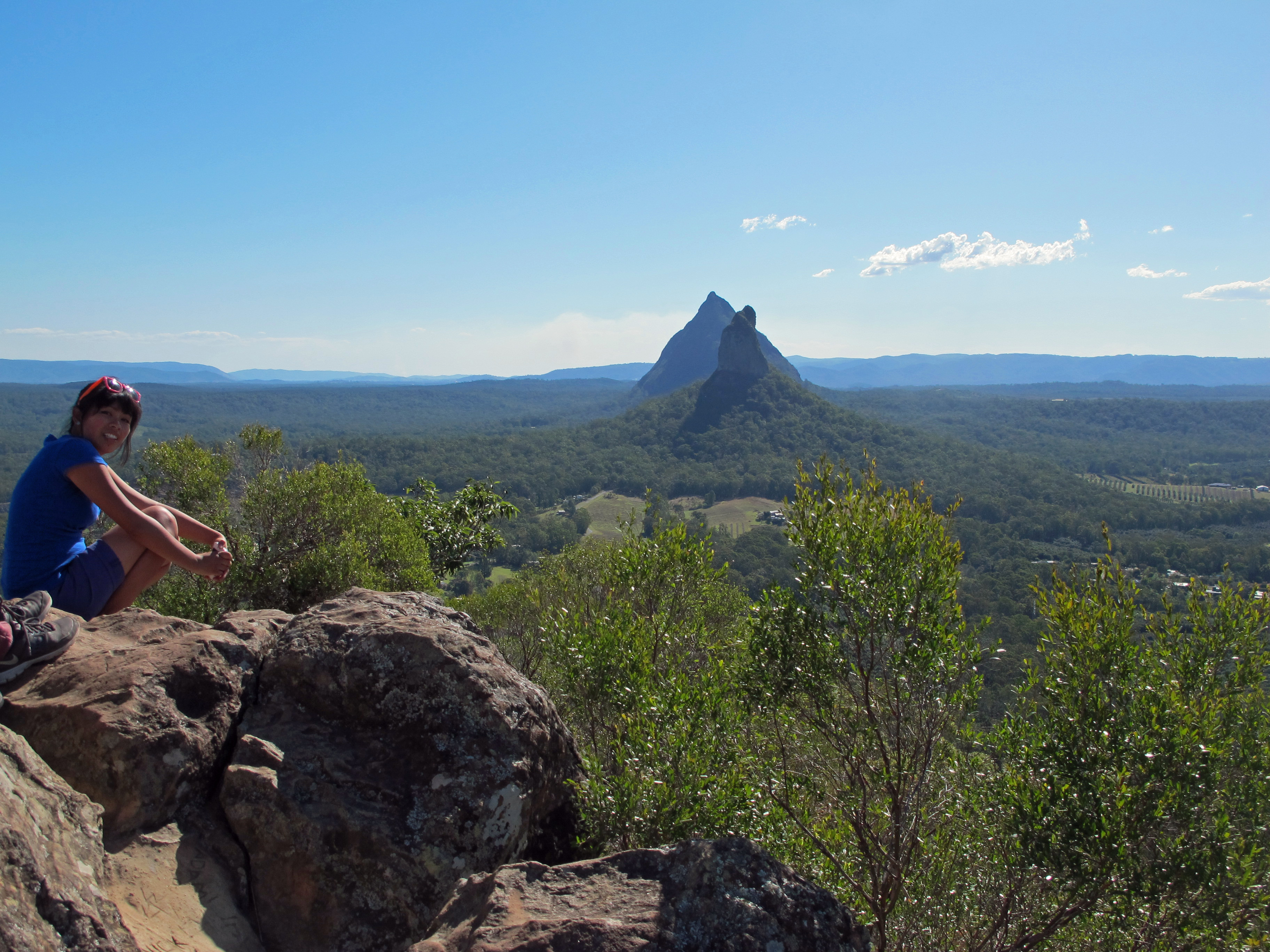
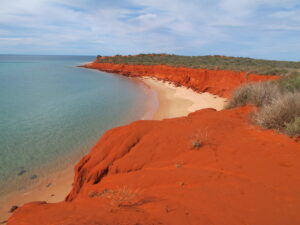
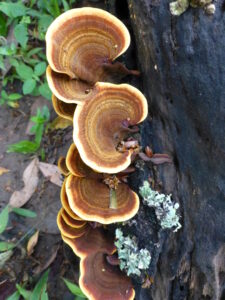
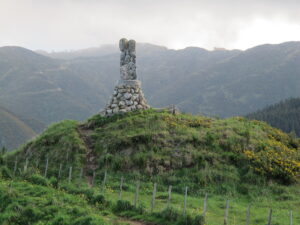
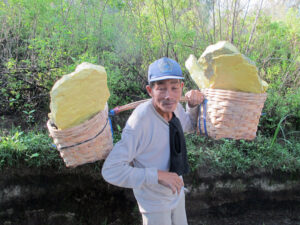
The vegetation looks almost tropical….?
Brisbane is perhaps a more sub-tropical part of Queensland, but the hinterland is rich in wet and warmth so what is not cultivated, like the reserves, is often rainforest.